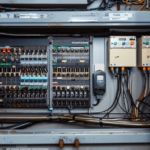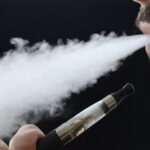Every commercial kitchen contains a variety of equipment that might be a potential source of the fire. Thus, the fundamental rule for commercial kitchens is to create a safe workplace. There is a range of commercial kitchen exhaust hood requirements that businesses should follow when it comes to a commercial kitchen hood. Such regulations are vital to ensure reduced fire hazards and provide better air quality in the kitchen working area. Today, we`ll introduce to you a list of commercial kitchen hood requirements that every business needs to be aware of.
Requirements for commercial kitchen hood
It is essential to follow your local commercial kitchen hood code regulations to be sure that you operate your kitchen legally. The truth is that most states focus on the International Mechanical Code to regulate businesses and their kitchens. Nonetheless, it will never hurt to check up on laws or code requirements in the region where you live.
1. Design and construction regulations
Non-fulfillment of design, construction, and layout requirements for your kitchen hoods can result in an increased chance for fire hazards and failed fire inspections. Commercial kitchen hood height requirements concern the vertical distance over cooking surfaces that should be no more than 4 feet.
Besides, the lower edge inside the kitchen hood should extend not exceeding 6 inches above the cooking surfaces. Other requirements are related to installing fire suppression systems under Type I exhaust systems and utilizing the right appliances according to the cooking volume.
2. Type I hood requirements
Hoods that belong to Type I require specific maintenance as they accumulate flammable substances. Ensure your hoods are installed no less than 18 inches away from any ignitable materials, made of steel or stainless steel, have labels for the minimum exhaust flow rate, noncombustible support, etc. 1.5 feet above is a height requirement for cooking areas without the open fire, while 2 feet above is required for environments with the exposed blaze.
3. Type II hood requirements
These hoods differ from Type I exhaust systems since they focus on removing smells from the air. The principal regulations for type II kitchen hoods are using stainless steel or steel for exhaust system production, installing sturdy support for a hood, and penetrations, seams, and joints are needed to be pressurized from the inside of a hood.
4. Cleaning requirements
Regular scrubbing of your kitchen exhaust systems is the first pledge to prevent the risk of fire hazards and equipment failures. Commercial kitchen hood clearance requirements include the following aspects. Make sure the design of your hoods allows you to clean an exhaust system inside and out.
Additionally, you should install grease drip pans to collect any leftover grease and make sure the grease ducts in your kitchen hoods have a canal required for maintenance and other activities. Other hood requirements for commercial kitchens incorporate sealing joints and openings and more.





